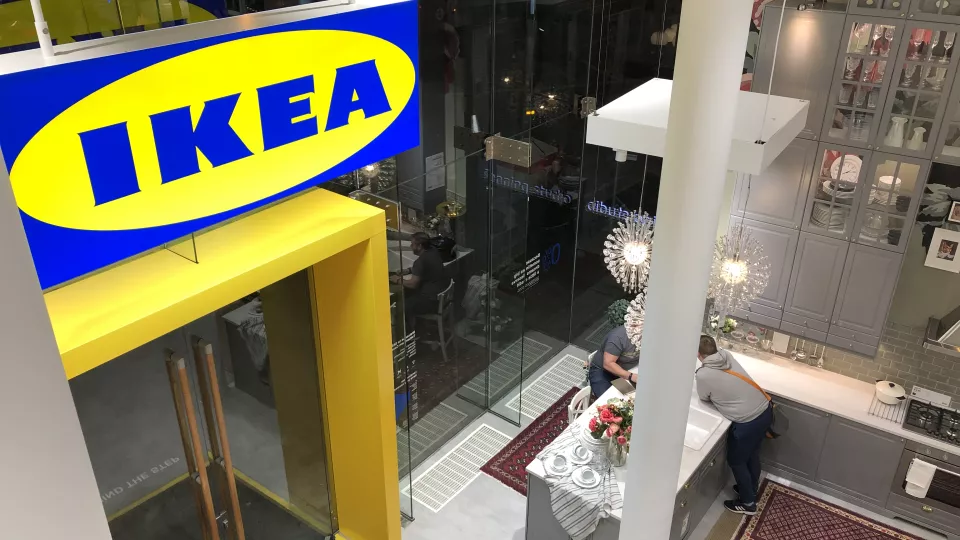This week, IKEA opened a bedroom store in central Stockholm. The store in The Lobby on Regeringsgatan is the latest in a series of smaller, city-centre formats that IKEA is currently testing in various parts of the world. It is an interesting development, at a time when other retailers are moving out of the city. And it represents another important step in IKEA's journey towards a modern mix of store concepts.
IKEA's traditional, out-of-town, blue-box, department stores have undoubtedly been an important part of its historical success but, in recent years, IKEA has experienced lower profitability and weaker growth. This necessitated a number of savings packages. It also led IKEA to slow down the launch of new blue-box stores and to look at alternative solutions instead. In Stockholm, there is already an IKEA Kök. It was initially planned to be a temporary investment but good results and a positive response from consumers made IKEA rethink. There are whispers in the industry that IKEA's Stockholm kitchen store has generated as many kitchen sales as a normal-sized blue-box store. If this is true, it is no wonder that they chose to make the investment permanent.
Other city-centre stores exist, or are planned, in cities such as New York, London, Paris, Hamburg and Moscow. These are all part of IKEA's effort to meet the customer in new ways and in new places. IKEA's investments in city-centre locations take many different forms and, right now, it's all about experimenting and finding a flexible mix of concepts. IKEA Bedroom in Stockholm, which is a 400 square metre showroom, and the IKEA Planning Studio on Tottenham Court Road in London are approximately the same size. Hamburg (Altona) and the planned establishments in city locations in Paris and Moscow are about a quarter of the size of a normal IKEA department store, i.e. about 7-10,000 square meters.
We are used to hearing about the demise of the high street and the ongoing threat to city-centre retail (by e.g. out-of-town shopping centres and ecommerce). What is it then that makes IKEA go against that trend and move into the city, when other retailers are moving out? And what happens in a company like IKEA when you break with a long-established store format, namely a big, blue box in a suburban field, with lots of space and big car park, which is accessible by car and has the entire range available for pickup?
The development of IKEA's smaller city-centre formats must be seen context. IKEA is concurrently rolling out online shopping and creating ways to meet the customer in several different channels. The physical meeting with IKEA will undoubtedly look different in the future, as will the flow of goods. Of course, this does not mean that the traditional IKEA department store will be entirely replaced. Instead, IKEA will supplement its retail portfolio so that it can meet new customers where they are and respond to their demands for accessibility and convenience. Yesterday's customers had the time and patience to visit an IKEA store. Today's customers are connected and demanding. They want to meet IKEA on their own terms. A business model that presupposes that a customer owns a car is perhaps no longer a sound one. The city-centre location will be a meaningful and strategic investment where IKEA creates personal meetings and experiences, without the customer having to go to an IKEA department store. The traditional concept may still be a possibility in the future but cannot be taken for granted.
In the story of David and the giant Goliath, big is certainly strong, but also slow. A normal-sized IKEA department store is approximately 30-40,000 square meters. Some are even bigger. Department stores in line with IKEA's traditional store concept take years to plan and build, but small-scale city establishments can be completed in a couple of months. Flexibility and rapid mobility are becoming increasingly important in the competitive and fast-moving retail landscape.
IKEA's retail portfolio is undergoing an unprecedented change. Developing a business model that has been so successful for so long is not easy. And the transformation is surely not without its challenges. It will require courage and patience. But new locations will create new opportunities for new kinds of customer meetings, flexibility, and efficient resource utilization. And striving to meet the customer where they are, in their connected everyday life, is completely in line with IKEA founder Ingvar Kamprad's thoughts on simplicity and constant development.
